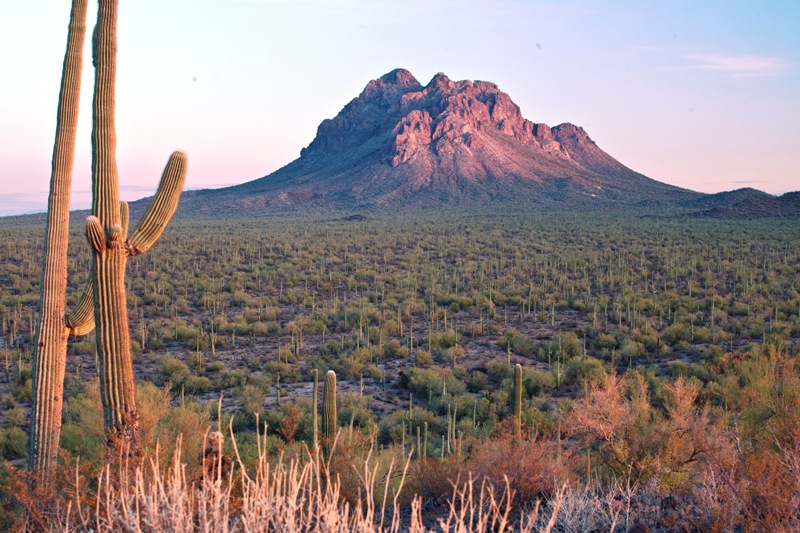Proclamation
Establishment of the Ironwood Forest National Monument
William J Clinton
June 9, 2000
By the President of the United States of America
The landscape of the Ironwood Forest National Monument is swathed with the rich, drought-adapted vegetation of the Sonoran Desert. The monument contains objects of scientific interest throughout its desert environment. Stands of ironwood, palo verde, and saguaro blanket the monument floor beneath the rugged mountain ranges, including the Silver Bell Mountains. Ragged Top Mountain is a biological and geological crown jewel amid the depositional plains in the monument.

The monument presents a quintessential view of the Sonoran Desert with ancient legume and cactus forests. The geologic and topographic variability of the monument contributes to the area’s high biological diversity. Ironwoods, which can live in excess of 800 years, generate a chain of influences on associated understory plants, affecting their dispersal, germination, establishment, and rates of growth
Ironwood is the dominant nurse plant in this region, and the Silver Bell Mountains support the highest density of ironwood trees recorded in the Sonoran Desert. Ironwood trees provide, among other things, roosting sites for hawks and owls, forage for desert bighorn sheep, protection for saguaro against freezing, burrows for tortoises, flowers for native bees, dense canopy for nesting of white-winged doves and other birds, and protection against sunburn for night blooming cereus.
The ironwood-bursage habitat in the Silver Bell Mountains is associated with more than 674 species, including 64 mammalian and 57 bird species. Within the Sonoran Desert, Ragged Top Mountain contains the greatest richness of species. The monument is home to species federally listed as threatened or endangered, including the Nichols turk’s head cactus and the lesser long-nosed bat, and contains historic and potential habitat for the cactus ferruginous pygmy-owl. The desert bighorn sheep in the monument may be the last viable population indigenous to the Tucson basin.
In addition to the biological and geological resources, the area holds abundant rock art sites and other archeological objects of scientific interest. Humans have inhabited the area for more than 5,000 years. More than 200 sites from the prehistoric Hohokam period (600 A.D. to 1450 A.D.) have been recorded in the area. Two areas within the monument have been listed on the National Register of Historic Places, the Los Robles Archeological District and the Cocoraque Butte Archeological District. The archeological artifacts include rhyolite and brown chert chipped stone, plain and decorated ceramics, and worked shell from the Gulf of California. The area also contains the remnants of the Mission Santa Ana, the last mission constructed in Pimeria Alta.
Section 2 of the Act of June 8, 1906 (34 Stat. 225, 16 U.S.C. 431), authorizes the President, in his discretion, to declare by public proclamation historic landmarks, historic and prehistoric structures, and other objects of historic or scientific interest that are situated upon the lands owned or controlled by the Government of the United States to be national monuments, and to reserve as a part thereof parcels of land, the limits of which in all cases shall be confined to the smallest area compatible with the proper care and management of the objects to be protected.
WHEREAS it appears that it would be in the public interest to reserve such lands as a national monument to be known as the Ironwood Forest National Monument:
NOW, THEREFORE, I, WILLIAM J. CLINTON, President of the United States of America, by the authority vested in me by section 2 of the Act of June 8, 1906 (34 Stat. 225, 16 U.S.C. 431), do proclaim that there are hereby set apart and reserved as the Ironwood Forest National Monument, for the purpose of protecting the objects identified above, all lands and interests in lands owned or controlled by the United States within the boundaries of the area described on the map entitled “Ironwood Forest National Monument” attached to and forming a part of this proclamation.
